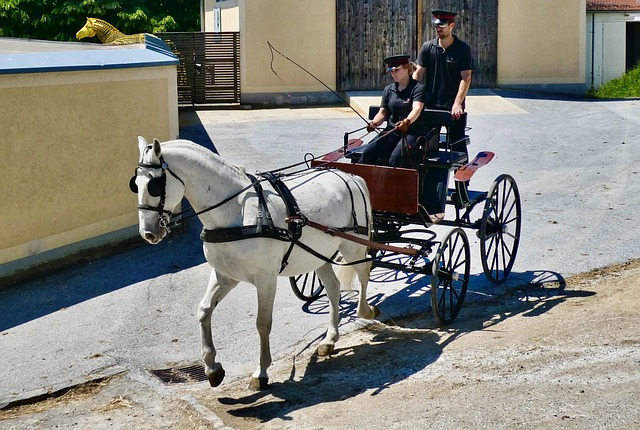Lane County homesteaders in Oregon relied on foraging and fishing for sustenance, utilizing abundant natural resources like forests, rivers, and coastal areas to gather edible plants, berries, roots, and mushrooms. Homesteading farms were vital for dietary habits and food security, growing diverse crops, trading produce, and preserving foods through canning and drying for year-round sustenance. Canning and hunting provided crucial protein sources, fostering self-sufficiency and cultural identity with traditional cuisine reflecting respect for nature's offerings. Pioneer days in Lane County saw homemaking as an art, defining daily life with resilient skills and land-based resources.
“Discover a glimpse into the culinary past of Lane County, Oregon, where the pioneer era shaped unique dietary habits. From the early settlers’ reliance on foraging and fishing to the thriving homesteading farms that supplied communities, this article explores the resilient food culture. Learn about canning and preserving techniques that ensured sustenance year-round, and delve into the role of local game and wildlife in the diet. We also showcase authentic pioneer recipes, offering a taste of the homemade foods that defined this era of Lane County homesteading.”
- Early Settlers' Diet: Foraging and Fishing in Lane County
- Homesteading Farms: Growing Food for Family and Community
- Canning and Preserving: Sustaining Through Season Changes
- Local Game and Wildlife: A Source of Protein and Tradition
- Pioneer Recipes: Handmade Foods from the Past
Early Settlers' Diet: Foraging and Fishing in Lane County

The early settlers in Lane County, Oregon, relied heavily on their ability to forage and fish for sustenance during the pioneer era. With vast forests, abundant rivers, and lush coastal areas, the region offered a rich variety of edible plants, berries, roots, and mushrooms that became staples in their diet. Foraging parties would spend hours exploring the wilderness, gathering nutritious wild vegetables, herbs, and fruits like salal, huckleberries, camas bulbs, and oyster mushrooms.
Fishing was another vital aspect of the settlers’ dietary habits. The county’s numerous rivers and streams teemed with salmon, steelhead, and trout, providing a consistent source of protein-rich meals. Settlers would set up camp along the water, using traditional fishing techniques to catch their daily provisions. This self-sufficiency in food sourcing was essential for survival during the challenging early years of homesteading in Lane County.
Homesteading Farms: Growing Food for Family and Community

In Lane County, Oregon, during the pioneer era, homesteading farms played a pivotal role in shaping dietary habits and ensuring food security for families and communities. Pioneers who settled in this region brought with them a deep-rooted knowledge of agriculture, passed down through generations, allowing them to cultivate diverse crops suitable for the local climate and soil conditions. These farms served not only as sources of sustenance but also as centers of community interaction where neighbors gathered to share skills, trade excess produce, and celebrate the bounty of the season.
The daily diet of Lane County homesteaders was heavily reliant on what they grew in their gardens and fields. Fresh fruits, vegetables, grains, and herbs were staples, with each family developing its own unique culinary traditions. Preservation techniques like canning and drying ensured that food could be stored for use throughout the year, even during harsh winters when fresh produce was scarce. This self-sufficiency not only nurtured resilience but also fostered a deep appreciation for the land and the cyclical nature of life.
Canning and Preserving: Sustaining Through Season Changes

In Lane County’s pioneer era, homesteaders embraced canning and preserving as essential tools for sustenance throughout year-round seasonal changes. With limited access to fresh produce, they developed innovative methods to extend shelf life, ensuring a consistent food supply during winter months when local cultivation was scarce. Canning involved sealing fruits, vegetables, and meats in jars using heat processing, allowing for long-term storage while preserving their nutritional value.
This practice not only facilitated year-round feeding but also fostered a sense of self-reliance among homesteaders. They meticulously preserved the bounty of summer and autumn, transforming their kitchens into bustling centers of food preparation and canning activities. Such efforts reflected the resilience and ingenuity of Lane County’s pioneers, who adapted to the challenges posed by seasonal variations in food availability through effective preserving techniques.
Local Game and Wildlife: A Source of Protein and Tradition

In the pioneer era, Lane County’s robust local game and wildlife played a pivotal role in shaping dietary habits among its homesteaders. Abundant resources such as deer, elk, and small game provided a consistent source of protein, crucial for sustaining families in this challenging environment. Hunting and gathering became not only a matter of survival but also a deeply ingrained tradition, passed down through generations.
These activities were integral to the self-sufficiency and cultural identity of Lane County homesteaders. The diverse cuisine that emerged reflected the region’s natural wealth, featuring game meats prepared in various ways, from smoked jerky to stews and roasted dishes. This connection to local wildlife not only fed bodies but also nurtured a profound respect for nature and its offerings.
Pioneer Recipes: Handmade Foods from the Past

In the heart of Lane County, Oregon, during the pioneer era, homemaking was an art that took center stage. Families relied on their own skills and the land’s bounty to create sustenance, crafting recipes passed down through generations. These were not merely meals but stories woven into every bite, reflecting the resilience and resourcefulness of those who called this place home.
The daily fare in Lane County homesteads was a far cry from modern convenience. From scratch, pioneers prepared hearty stews, bread baked in wood-fired ovens, and preserves preserved with care. Ingredients were foraged, hunted, or raised on their own plots—from wild berries and roots to chicken, pigs, and cattle. Each dish carried the essence of the land, offering warmth and nourishment during Oregon’s challenging early years.






